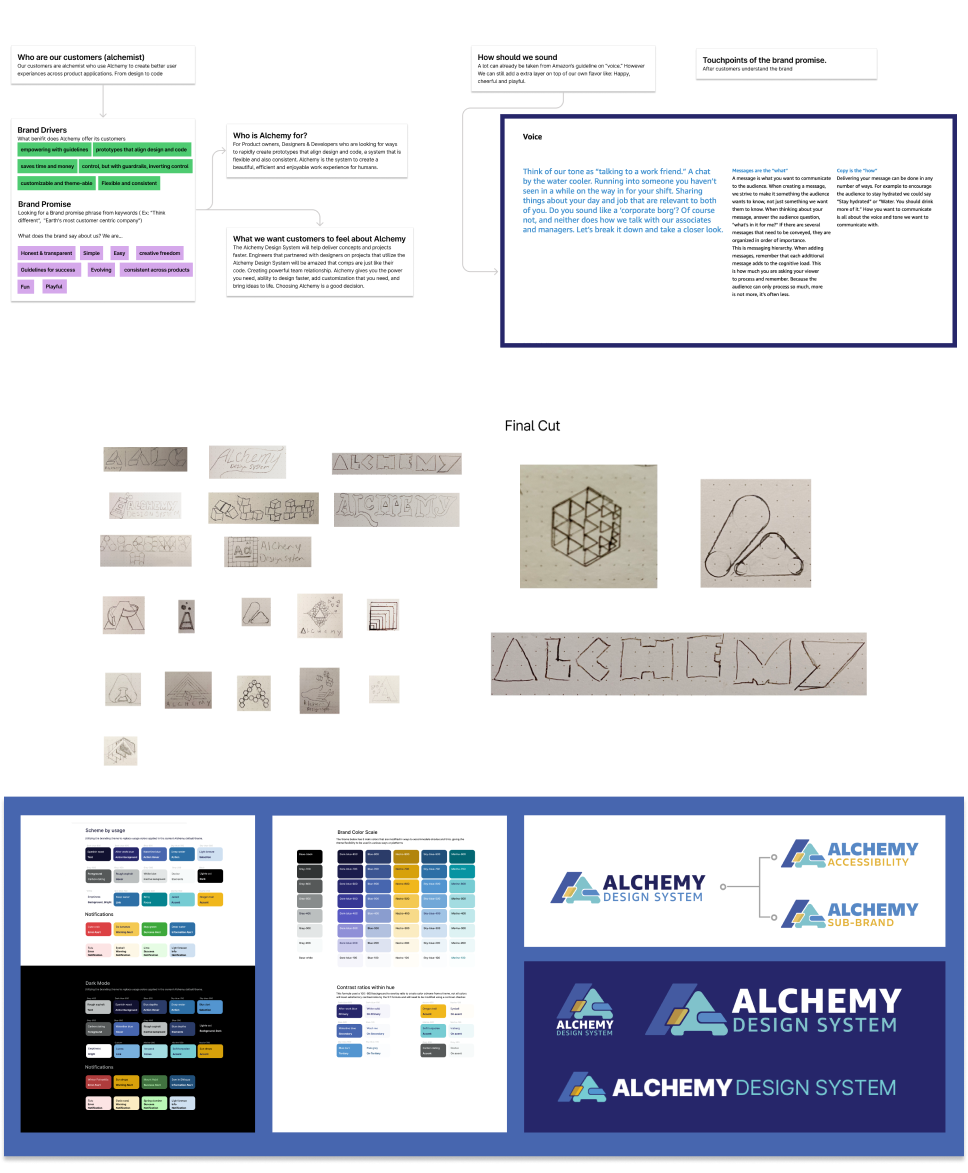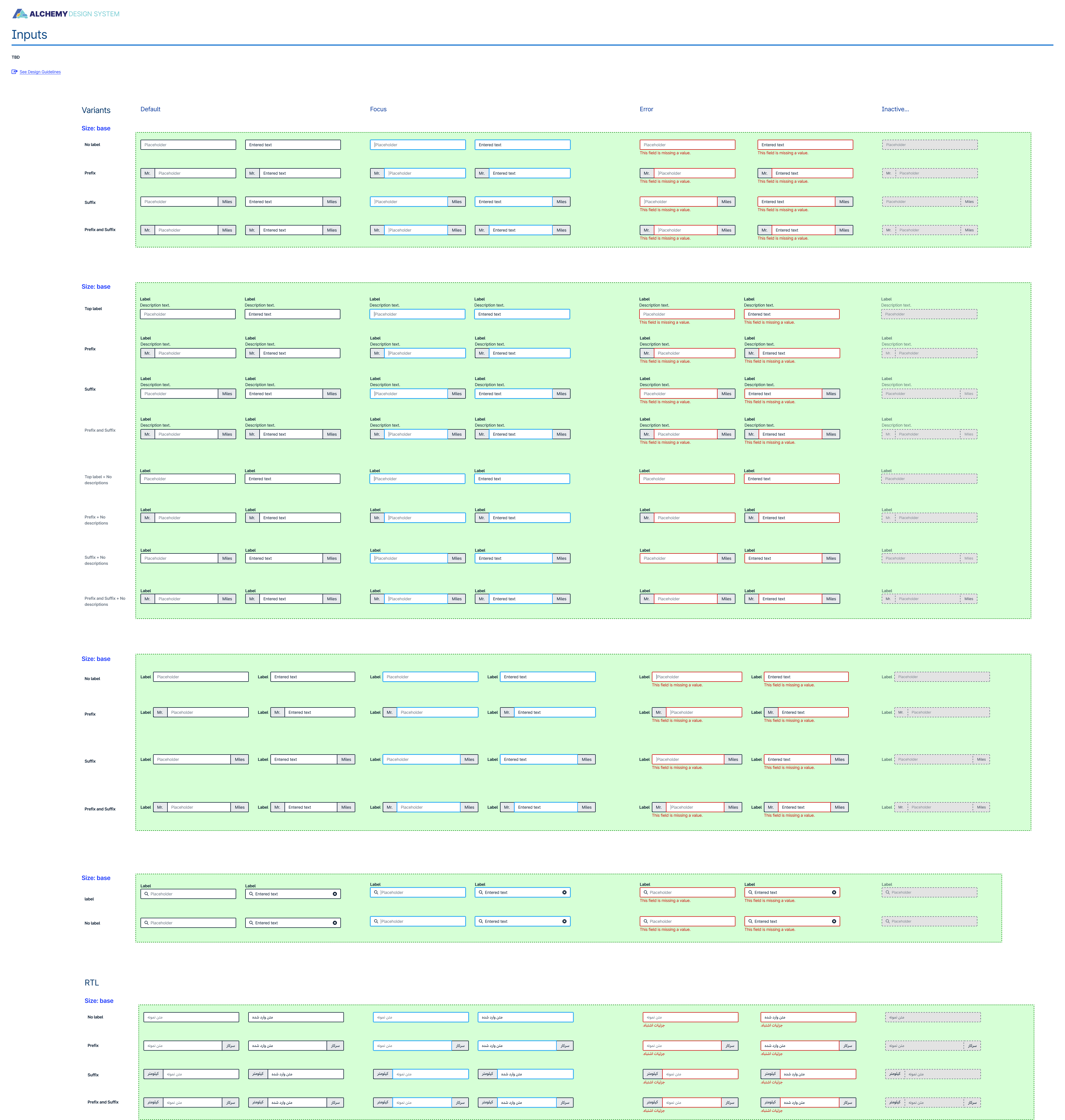

The Fulfillment Technology side of Amazon creates hardware and software equipment application across a broad line of Amazon business. Without a dedicated design system many of these application failed to meet standards from accessibility to usability. Many were deeply fragmented and lacked consistency even within the same domain. Causing may user pain points.
As a designer I Joined the Alchemy team as the first designer among a team of engineers to bring the visual aspect of the system library to life using the Brad Frost’s Atomic philosophy. Work cross teams to create UX guidelines for components and patterns.
Work with product owners, UI designers to serve there needs. hosted contribution session.
Create and maintain a Figma design system library.invent and simplify the product
Create design sprints, process for other designers to contribute and onboarding Alchemy.
Getting alignment with existing product designers, owner, and stake holders to use common design patterns and components over the fragmented ones. Discovering and creating a brand from scratch
The branding and website work involved me analyzing the scope and creating a plan and timeline, set review iteration with the team and divided the process up into sprints. Mentor Jr. designers with design philosophy. Objective included defining who Alchemy as a brand, the vision, who are the customers, and what does Alchemy want to communicate to them.I conducted research with Alchemy stake holders to understand out how they viewed Alchemy as a brand with a set of trigger questions. I later took these responses and compiled them into single phrases and a sets of keywords that represent the brand. with this information captured we then began creating a logo through sketches. at each iteration of this process i involved the entire Alchemy team and its stakeholders to ensure everyone was on the same page and knew and understood the brand, and expressed the importance of brand stewards once it was all over.

Create a usable Figma design system with atom level components designer can take and build upon in any product space. Create a Figma contribution model that will allow not only myself but other teams to invent and simplify using the contribution process.

Pattern and guideline alignment - The Alchemy design system is best interpreted from the autonomy of the products own custom library and leaving the way teams present there ideas with a degree of ambiguity, but with some standardization of course.
(A new feature at the time) the introduction of branches gave us a similar framework as the code world to create batches of iterations to review and approve before merging changes while other changes are happening synchronously. My hypothesis was that a designer contribution model will drive more adoption of Alchemy across the Amazon fulfillment domain..
To tackle the documentation website project, I first broke it down into manageable sections focusing on three main areas: content, wireframing, and high-fidelity designs. Collaborating closely with a junior designer, a content writer, and the engineering team, I planned and executed weekly design sprints to ensure the site was completed efficiently and effectively.
Within the organization, different roles had varying objectives. Users needed a balanced approach to pattern components and page templates. Navigating the deeply held beliefs of product owners about the design system's operation, both positive and negative, was challenging. However, I ultimately achieved significant progress in unifying these elements into a cohesive design system.
I was able to make huge leaps in creating a synthesis of the entities into a unified design system.
The Figma contribution model, once adopted by other Sr. designer. Discussions around pattern and component alignment became more and more natural discussion. Gaining volunteer to lead other alignment session.
Form a cohesive working environment with engineers to build new and update old coded components to reflect the designs that have been adopted. From vernacular used to pixel perfect consistency. Ways to align on version control with design and code..
BackCopyright © Lamonthart.com